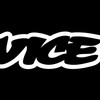Photo of a baby, screenshot from YouTube
Thanks to the wonders of modern medicine, Charles Darwin isn't getting the chance to do his job. A recent study led by Austrian researches found that an increasing number of babies must now be delivered by caesarean because their mother's birth canals just aren't wide enough for a natural birth.The findings, published in the Proceedings of the National Academy of Sciences, suggest instances where babies can't fit down the birth canal have gone from 30 in 1,000 births during the 1950s and 60s, to 36 in 1,000 births today.While that kind of seems like a small increase, given the time frame we're talking about here—only 50 years or so—in the context of our evolution as homo sapiens (100,000 years) it's a huge-ass deal. And the researchers have chalked it up to evolution.See, a couple hundred years ago, those narrow birth canal genes would never have been passed down. The mother would've died in attempted childbirth, or the baby wouldn't survived the tough birth. Either way these genes would've stayed out of the gene pool.In 2016, mothers dying during childbirth is exceedingly rare. Australia reported just 49 maternal deaths directly related to the pregnancy between 2008 and 2012, which is around 7.1 deaths per 100,000 healthy births. America's rate of maternal death is slightly higher, around 18.5 deaths per 100,000 births.Both those numbers are actually pretty good, when you look back to the 1930s, when 500 women died for every 100,000 births. Of course, they weren't all dying because their birth canals were too narrow; many women died from very simple infections in the pre-antibiotics world.Today women carrying those narrow-birth-canalled genes would likely just get a C-section. So they survive, and so do their babies who inherit these genes and pass them on too. That's what the researchers think we're seeing happen here.So the gene pool is changing. Does it matter?That depends where you live. Having a C-section in an Australian public hospital is free, so it's not a huge a deal financially. Our doctors are good at giving them, and it won't send you broke. Owners of narrow birth canals here, don't stress.In America; however, things aren't as simple. With Trump's threatened repeal of the Affordable Care Act, more C-sections is worrying. In 2011, three years before the Act came into effect, it usually cost women more than US$20,000 for prenatal care and delivery—and that's just for an uncomplicated birth, not a caesarean. A 2013 estimate put a C-section at about US$27,866.Now, every ACA-approved health plan must cover pregnancy, maternity, and newborn care—that's before, during and after the birth. But if the Act goes out the window, that coverage might too. And that could leave women shouldering a heavy price tag.
Advertisement
